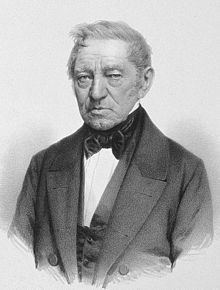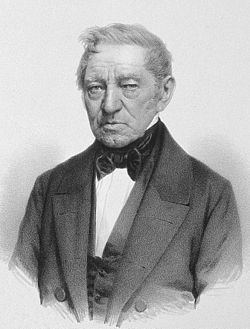Name Martin Lichtenstein | ||
 | ||
Parents Anton August Heinrich Lichtenstein Books Travels in southern Africa | ||
Martin Hinrich Carl Lichtenstein (10 January 1780 – 2 September 1857) was a German physician, explorer, botanist and zoologist.
Contents
Biography

Born in Hamburg, Lichtenstein was the son of Anton August Heinrich Lichtenstein. He studied medicine at Jena and Helmstedt. Between 1802 and 1806 he travelled in southern Africa, becoming the personal physician of the Governor of the Cape of Good Hope. In 1811 he published Reisen im südlichen Afrika : in den Jahren 1803, 1804, 1805, und 1806; as a result, he was appointed professor of zoology at the University of Berlin in 1811, and appointed director of the Berlin Zoological Museum in 1813. In 1829, he was elected a foreign member of the Royal Swedish Academy of Sciences.
He died after he had a stroke at sea travelling aboard a steamer from Korsør to Kiel.
Legacy
Lichtenstein was responsible for the creation of Berlin's Zoological Gardens in 1841, when he persuaded King Frederick William IV of Prussia to donate the grounds of his pheasantry. He also published Johann Reinhold Forster's manuscripts for Descriptiones animalium in 1844.
In the field of herpetology he described many new species of amphibians and reptiles.
Among species named by Lichtenstein are included the Australian king parrot (Alisterus scapularis), crowned sandgrouse (Pterocles coronatus), and the Cape night adder (Causus rhombeatus).
In 1859 Italian herpetologist, Giorgio Jan, named the forest night adder (Causus lichtensteinii) in honor of Hinrich Lichtenstein, as did the Dutch zoologist Coenraad Jacob Temminck with the Lichtenstein's sandgrouse (Pterocles lichtensteinii).
Writings
Lichtenstein's Reisen im südlichen Afrika in den Jahren 1803, 1804, 1805 und 1806 was translated into English, and published in 1812 as "Travels in Southern Africa in the years 1803, 1804, 1805 and 1806".
